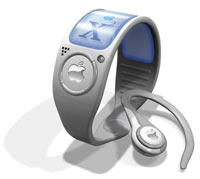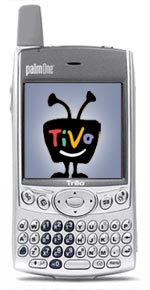ESPN Motion for Mac Launched
 With our last redesign in 2003, ESPN.com launched a revolutionary video feature called “ESPN Motion”. By downloading high quality video transparently to users’ hard drives, we were able to give our viewers, free of charge, some of the highest quality video on the web, with no waiting, no buffering, and no noticeable encoding artifacts. With a simple installation of the little ESPN ActiveX control, users could watch freshly cut ESPN video right within our front page.
With our last redesign in 2003, ESPN.com launched a revolutionary video feature called “ESPN Motion”. By downloading high quality video transparently to users’ hard drives, we were able to give our viewers, free of charge, some of the highest quality video on the web, with no waiting, no buffering, and no noticeable encoding artifacts. With a simple installation of the little ESPN ActiveX control, users could watch freshly cut ESPN video right within our front page.
Well, it’s been a little over a year now, and there have been over 3 million downloads of the ESPN Motion installer with hundreds of thousands of active users viewing video every day. Through this trial, it became apparent that given high enough video quality and a wide enough selection of cuts, there really is a place for this sort of multimedia on the web, if you do it right.
Part of “doing it right”, however, is serving the largest audience possible. When we initially launched ESPN Motion, we had to limit the audience to Internet Explorer users on the Windows platform. This limitation was strictly a technological one, as the easiest way to download and access video on a user’s hard drive is by using ActiveX. With this in mind, we designed and engineered our own patent-pending ActiveX control to serve video to all Disney sites. With a 95% market share (for now at least), PC Internet Explorer accounted for the great majority of Disney and ESPN users, so this initial release of Motion at least served most of the market.
Now that Motion has proved to be such a popular addition to ESPN.com, it’s time to bring the feature to our beloved Mac users. We run a ton of Macs at ESPN and Disney, not just in the design department but in engineering as well. With this in mind, the teams in New York and Bristol today bring you ESPN Motion for Mac. By utilizing Flash MX video and plenty of fancy DHTML and CSS goodness, Mac users are now able to view ESPN Motion video without even downloading an installer. In this user’s opinion, it’s an even better experience than the original.
So head on over to the Mac Motion showcase to check it out, or just go to the ESPN front page and look for Motion in the right-hand sidebar.
All Hail the iPhone
 One of the longest running rumors in the Apple community is the emergence of an Apple-branded cell phone. Apple has denied the existence of such a product for as long as the world can remember, and up until now, they’ve had legitimate reasons to stay away from the cell phone market. Poor data speeds, poor service, incompatible frequency standards, and lack of profit on handsets have all been cited as reasons to stay away from the cell phone business. With the emergence of several new developments in the cell phone industry, however, it is becoming rapidly clear that Apple is ripe to enter the cell phone market within the extremely near future.
One of the longest running rumors in the Apple community is the emergence of an Apple-branded cell phone. Apple has denied the existence of such a product for as long as the world can remember, and up until now, they’ve had legitimate reasons to stay away from the cell phone market. Poor data speeds, poor service, incompatible frequency standards, and lack of profit on handsets have all been cited as reasons to stay away from the cell phone business. With the emergence of several new developments in the cell phone industry, however, it is becoming rapidly clear that Apple is ripe to enter the cell phone market within the extremely near future.
Let’s examine what’s new:
The MVNO Market
As companies like Virgin, AT&T Wireless, and others enter the new MVNO (Mobile Virtual Network Operator) market, it is becoming clear that the key to success in the MVNO realm is branding. For those unfamiliar with MVNOs, they are a relatively new phenonemon in the wireless industry whereby a company like Virgin resells wireless minutes through a provider like Sprint PCS. A customer buys a Virgin-branded phone at a retail location, signs up with service through Virgin, and goes on to use the phone, receiving bills and notices as though everything was coming from Virgin. Behind the scenes, however, Sprint is doing all the heavy lifting. Their network provides the infrastructure for placing and receiving calls, they meter customers’ usage, and just about everything “technical” related to the customers’ use of the phone is handled by them. The deal is a win-win for both companies because Sprint fills up their network with more customers and Virgin’s brand does all the selling. Many MVNO operators have a special differentiating factor to them, and Virgin’s is pre-paid service… perfect for teens.
GSM and CDMA
It used to be impossible to design a phone which would work on most cellular networks. The U.S. market was so splintered with incompatible standards that service providers had to pay handset manufacturers to develop phones for their platform. Well now it’s 2004 and the world seems to have standardized on two basic standards for now — GSM and CDMA. In the U.S., Sprint PCS and Verizon use CDMA and T-Mobile, Cingular, and AT&T Wireless use GSM. What this means is that handset makers need only develop for two platforms to cover 90% of the market. Handspring currently offers its Treo 600 to customers of all five of the providers mentioned above. It is for the most part, an identical unit, save a minor color variance and a few internals.
Profitability in Handsets
Handspring is smiling all the way to the bank with the success of their Treo 600 smartphone. Even with a $600 price (near the top of the cell phone market), Treos are flying off the shelves faster than Handspring can manufacture them. While most people pay under $100 for their phone, or nothing at all, the pent-up demand for a true portable convergence device is so great that Handspring can sell a unit with a fairly low-resolution screen and no bluetooth for crazy prices. There will always be cheap little free phones around to coax customers into signing long-term contracts with service providers, but Handspring has proved with the Treo that the high end of the market is where the profit is.
The Success of the iPod
Apple has enjoyed the same sort of success with the iPod as Handspring has with the Treo. Both are very expensive devices which were eaten up by the public not because they filled niches, but rather because they created niches. There was no clamoring for a $400 portable music player before the iPod and there was no clamoring for a $600 phone before the Treo. Apple has turned the iPod into a cultural phenomenon by giving people all sorts of new freedoms they never had before.
The iPod and the Treo are about the same size, they both play MP3s, and yet the iPod only does a few things better. It has up to 40 gigs of storage, as compared to the 1 gig SD card you can stick in a Treo. That’s about 10,000 songs vs. 250 songs (albeit in removable form). The second thing is does better is provide a dedicated music-centric interface. The Treo’s interface must do 1000 things with the iPod’s does only do a few. And finally, the iPod looks a little better than the Treo, and that is a testament to Apple’s legendary design prowess.
Aside from those three things, however, the Treo dropkicks the iPod right off the playing field. It makes calls, organizes contacts, syncs with PCs and Macs, plays games, runs applications, gets email, surfs the web, checks blogs, has crazy-high battery life, and on and on and on. So if I only have room for one cigarette-pack-sized device in my pants pocket, which one am I going to pick? That’s easy. There is no good reason for portable music players to continue on as standalone units, and Apple, being a smart company, realizes this.
Viable Cellular Data Speeds
The “wireless web” has long been a joke among those of us involved in web design and development. Who wants to develop for tiny screens and sub 14.4kbps speeds? Cellular service providers placed large bets on their data networks early and when the customers failed to come in, the public lost faith in the business. While the 3G speeds companies have been promising for the last several years still aren’t here yet, the data rates on the big five cell networks in the U.S. could now legitimately be considered viable for lite-duty digital communication. Reading e-mail is a snap, syncing contacts takes seconds, and even browsing the web is an acceptable experience if you don’t mind waiting a few seconds here and there. Were Apple to make waves in the cell phone industry, they would make waves on the data side of things, and the state of the industry suggests the timing may finally be right for such a foray.
Read more…
Dashboard: Benevolent Pragmatism
 Who would have thought the “Little Browser That Could” would create such a flap in the web standards community? After reading Dave Hyatt’s explanation about what HTML extensions Apple is adding to WebKit, I am simply in awe at how far little-known KHTML has come under the tutelage of one very talented person at one very idealistic company. To do what Apple has done with this rudimentary rendering engine in less than two years is nothing short of amazing.
Who would have thought the “Little Browser That Could” would create such a flap in the web standards community? After reading Dave Hyatt’s explanation about what HTML extensions Apple is adding to WebKit, I am simply in awe at how far little-known KHTML has come under the tutelage of one very talented person at one very idealistic company. To do what Apple has done with this rudimentary rendering engine in less than two years is nothing short of amazing.
So now that Dave’s fit WebKit with a gown for the ball, Apple is looking for some glass slippers. Enter Dashboard extensions. Enter shortly thereafter, Eric Meyer. Eric rightly questions Apple’s implementation plan, yet recognizes and respects what Dave and his team are trying to accomplish. Instead of offering a blanket condemnation of everything Dashboard stands for, Eric clenches his fists a few times, breathes deeply, and offers constructive suggestions that only he and a handful of other people in the world are even capable of thinking of. As a result of these suggestions, Dave listens, thinks, and responds positively before the dust can even settle.
This is what happens when two smart people listen to each other.
It is commendable enough that Apple has been this open with the development of Safari, but to show this sort of flexibility and transparency is a huge break in tradition for the normally covert company. After all, we’re talking about an operation who has fired people for discussing the tint of aluminum used in their cases. Apple, past and present, is legendary for its ability to keep a lid on things, and yet with Safari it not only breaks this model but turns it completely on its face.
Read more…
Bloglines Redesigned!
 Well it’s about half past midnight right now and it looks like Bloglines just relaunched a few minutes ago with a spankin’ new design. It’s always weird catching redesigns as they happen. You’re at the old site one minute, then you click a link and it’s like the Wizard of Oz all of a sudden.
Well it’s about half past midnight right now and it looks like Bloglines just relaunched a few minutes ago with a spankin’ new design. It’s always weird catching redesigns as they happen. You’re at the old site one minute, then you click a link and it’s like the Wizard of Oz all of a sudden.
Although I’ve only played with the shiny new interface for about 20 minutes now, I have to say that I am thoroughly impressed so far. It feels like there is quite a bit of new functionality to enjoy, and yet I don’t feel disoriented or sick to my stomach as with some other recent redesigns. A huge part of the challenge in redesigning a major site is to inject freshness while not alienating loyal users. I salute thee, Bloglines, for succeeding in this regard.
Among the new features are:
- A simple point-and-click publishing system for creating your own blog
- A new Clippings metaphor to replace the existing Saved Items feature
- A skinnable blogroller
- A slightly retooled reading interface
- A more informative front page
- Enhanced searching and sharing capabilities
- Sliding-Doors style zoomable tabs (a la Douglas Bowman)
… and lots of other stuff I’m too tired to test out right now.
All in all, this looks like another successful improvement of what is already my most visited site on the ‘Net. Sure I’d like to see more interactivity, more out-of-browser functionality, and smarter aggregation routines, but in the meantime, I’m happy with these incremental improvements.
Content aggregation has not even entered its golden age yet, but Bloglines continues to show us the way when it comes to no-nonsense web-based information gathering.
Treoing your Tivo
 Jason Shellen, of Google, wrote briefly today about his experience programming a Tivo from a Treo 600 cell phone. Jason was using Tivo’s new “Online Scheduling” feature and sounded very impressed with the whole experience.
Jason Shellen, of Google, wrote briefly today about his experience programming a Tivo from a Treo 600 cell phone. Jason was using Tivo’s new “Online Scheduling” feature and sounded very impressed with the whole experience.
I’ve been scheduling recordings on my Series 1 DirecTivo with my Treo 600 phone for several months now, but I’ve been using the open source TivoWeb software instead. Installing the tiny TivoWeb package on your box turns it into a full-fledged web server with access to the outside world. The end result is that from any browser in the world (including the nice one on the Treo), you can access every aspect of your Tivo’s interface. You can even search for programs or physically change what channel your TV is tuned to… all via IP. And since TivoWeb is HTML and CSS driven, it’s a snap to create stylesheets which look great on desktop browsers and handheld devices as well.
So I’m wondering… has anyone tried both the official Tivo Online Scheduling feature and the TivoWeb Project’s open-source implementation? Are there any compelling reasons to use one over the other? I’m sure the lack of command-line setup and other Unix scariness is a big plus on the side of Tivo’s official service, but is it as powerful as what the TivoWeb Project gives you? In other words, can I freak housesitters out by changing channels from halfway across the world?
I think if more people were aware of features like remote scheduling, we wouldn’t see the levels of DVR/VCR ambivalence we still see in the market today. Why is Doogie Howser telling me how to pause football games when a less annoying celebrity could be telling me about remote scheduling?
Newsmap as a Model for Smart Aggregation
 Information overload. It’s the next big issue in publishing, and technology in general. The day you have 400 e-mails in your inbox, 900 new items in your RSS aggregator, and 8 Instant Messenger windows on your screen will come. For some people, it’s already here.
Information overload. It’s the next big issue in publishing, and technology in general. The day you have 400 e-mails in your inbox, 900 new items in your RSS aggregator, and 8 Instant Messenger windows on your screen will come. For some people, it’s already here.
With the internet still growing and changing at such a rapid rate, the raw amount of information your brain processes will see a huge increase in this decade. There’s probably even a Moore’s Law-esque equation for it. So if we are finding that the flow of information into our lives is only going up and our free time is only going down, how do we deal with this increasing imbalance?
The answer is agentry. A smart agent of sorts that sits on your desktop and acts as mediator between you and the world. If you want something from the world, your agent goes out and finds it for you. If the world wants something from you, it needs to talk to your agent first. We may have various agents in our lives already but none accomplishes what the smart agent of the future will accomplish.
Read more…
Site Experiment: Puget Sound Cam
 When it comes to designing public sites, I am a big fan of giving control to the user. The old school of web design told you to specify a page’s visual parameters in such exact terms that users couldn’t really do anything to adjust it. This was mostly the by-product of inconsistent browsers and heavy-handed design techniques. Although we haven’t gotten completely away from browser issues yet, we now have stylesheets with which to create entire design motifs.
When it comes to designing public sites, I am a big fan of giving control to the user. The old school of web design told you to specify a page’s visual parameters in such exact terms that users couldn’t really do anything to adjust it. This was mostly the by-product of inconsistent browsers and heavy-handed design techniques. Although we haven’t gotten completely away from browser issues yet, we now have stylesheets with which to create entire design motifs.
By using a dynamic style switcher like the one on the upper right side of this page, we can offer users the choice of several different looks. Since there really is no accounting for taste in any form of media consumption, you only increase the likelihood that users will enjoy your site by offering them a few choices.
Read more…
Storytelling on the Web
 When you’re a kid, you are spoiled by all of the people in your life who want to tell you stories. Your parents, your babysitters, your grandparents, your teachers… everyone in your life is just dying to entertain and enlighten you. Whether it be fictional fairy tales or true life experiences, you are surrounded by narratives during your formative years.
When you’re a kid, you are spoiled by all of the people in your life who want to tell you stories. Your parents, your babysitters, your grandparents, your teachers… everyone in your life is just dying to entertain and enlighten you. Whether it be fictional fairy tales or true life experiences, you are surrounded by narratives during your formative years.
But then something happens when you become an adult. Your life gets a lot busier and ingesting content becomes more of an active process. These days, most people are turning to the web for all of their information needs. Unfortunately right now, the internet is more about indexed chunks of information than storytelling, but there are notable exceptions to this. Take Second Story, a Portland-based interactive agency.
I’ve long admired Second Story’s work in the interactive storytelling realm. In fact, I’d say they pretty much invented it. When I judged the Rosey Awards last year, I put both of their entries, Mark Twain, and Mick Jagger, Goddess in the Doorway two full points above the rest of the field. Mark Twain got my Best of Show vote, and Mick Jagger got a gold. Second Story is just so good at capturing the essence of a subject and presenting it in a linear and non-linear way at the same time. One of the most important things to do when telling a story on the web is to allow the lean-back experience of just watching a linear plotline unfold, and the lean-forward experience of clicking around and skipping from section to section.
Another stunning example of storytelling on the web is Whitehouse Animation’s Kunstbar. Although this is a completely linear experience, Kunstbar proves that hand-illustrated, hand-animated masterpieces can come off as brilliantly on the web as they can on TV. One of the most creative short animation flicks I’ve ever seen, Kunstbar is definitely worth a look.